
Ethoinformatics I
Developing a standard vocabulary and data model for behavioral field research
Kenneth L. Chiou · Anthony Di Fiore · Robyn Overstreet · Mike Chevett · Tom Igoe


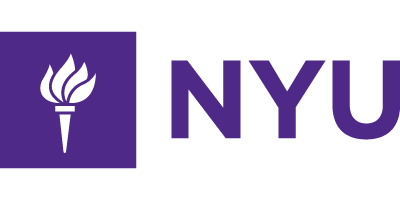
Ethoinformatics
Building capacity for
data discovery, data reuse, and data comparison
for behavioral research
(with particular emphasis on field primatology)
Ethoinformatics Working Group
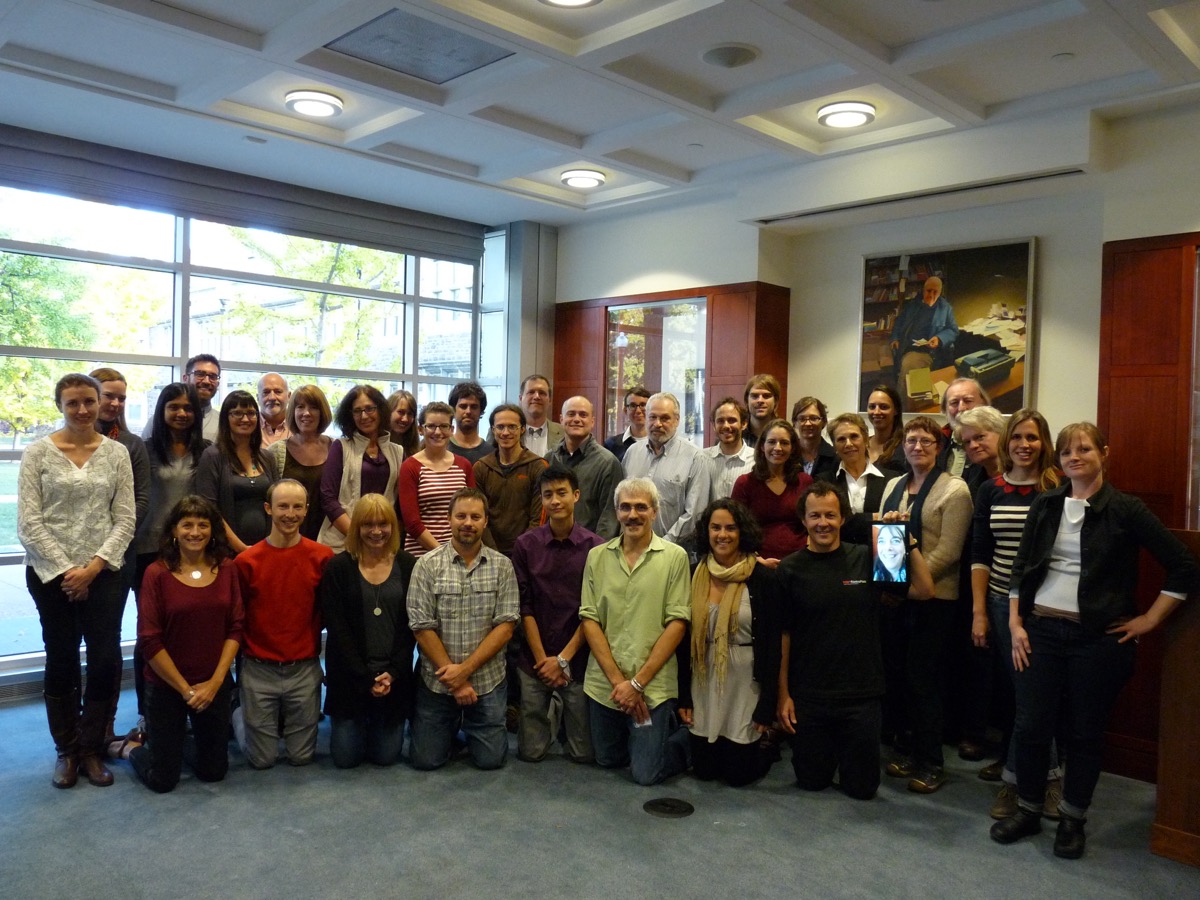
November 2013
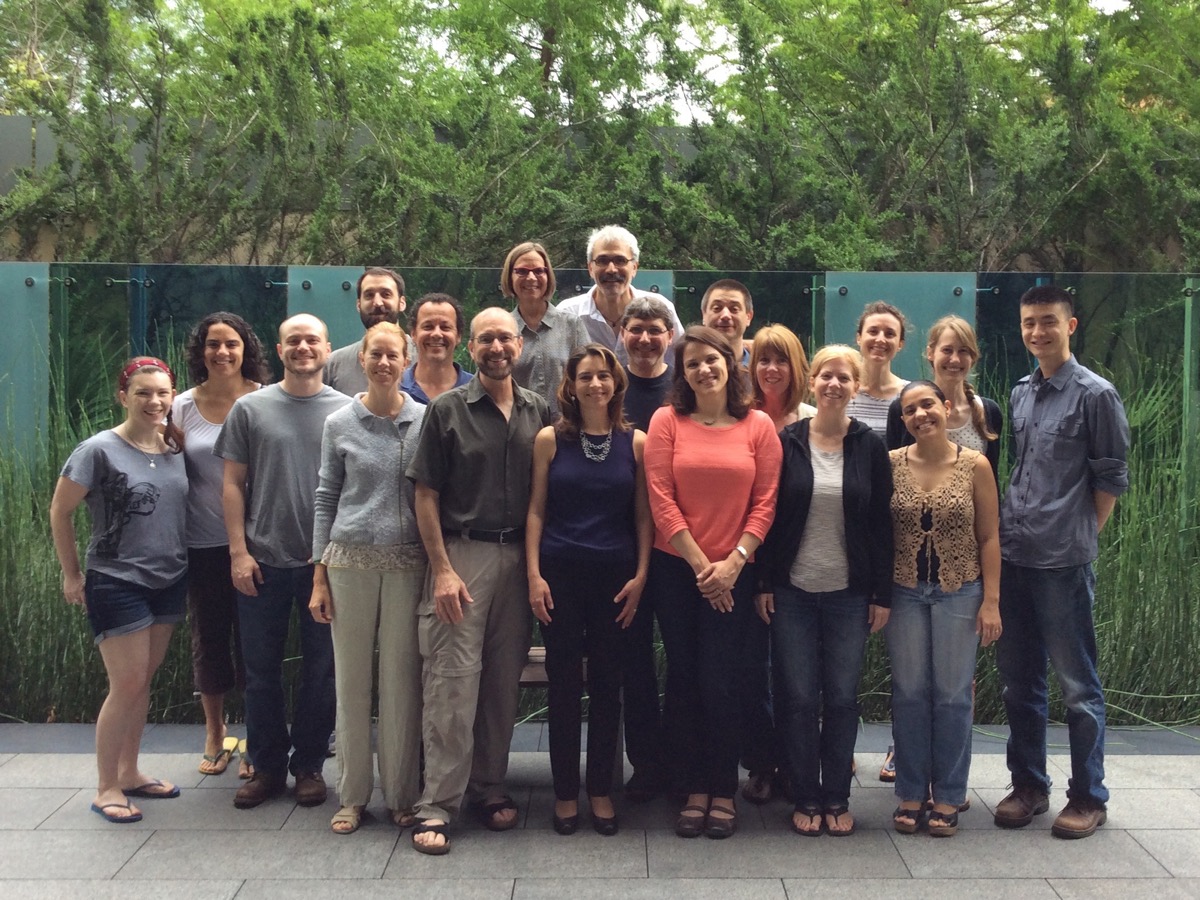
May 2015
Imagine . . .
Bad news
Primatological data are complex
On a typical day, we might be concerned with:
- activities and social interactions of animals
- locations, identities, and availability patterns of key resources
- meteorological or climatological patterns of occupied sites
- size, composition, and spatial arrangement of social aggregations
- life histories of study animals
- morphological measurements of study animals
- molecular information derived from biomaterials
Obstacles to comparison
- Research data are geographically disjunct
- Datasets vary in their
- terminology
- organization
- technology
- Metadata (data about data) are seldom documented
- Lack of training in information science
- Concerns about data access and data ownership
Project goals
- A community-derived standard vocabulary
- Mobile data collection and support software
- Compatibility tools for existing data
- A framework for long-term data archiving
Breaking the Table
Famous primates (fictional) 🙊
| ID | Name | Species (best guess) |
|---|---|---|
| 1 | Rafiki | mandrill |
| 2 | Curious George | chimpanzee |
| 3 | King Kong | gorilla |
Key-value (key:value) data
{
"ID" : 1 ,
"Name" : "Rafiki" ,
"Species" : "mandrill"
} , {
"ID" : 2 ,
"Name" : "Curious George" ,
"Species" : "chimpanzee"
} , {
"ID" : 3 ,
"Name" : "King Kong" ,
"Species" : "gorilla"
}| ID | Name | Species |
|---|---|---|
| 1 | Rafiki | mandrill |
| 2 | Curious George | chimpanzee |
| 3 | King Kong | gorilla |
Key-value data are well-suited for distributed data challenges
The key-value model is sufficiently flexible for generalization across projects
The missing ingredient hindering data comparison is a standard vocabulary for keys, which is necessary for encoding semantics
Linked data
- Discipline centered around connecting data across the web
- Facts about anything can be represented as triples
- sky ‣ isColored ‣ blue
- All components can be named as URIs so that usage is consistent and meaning is unambiguous
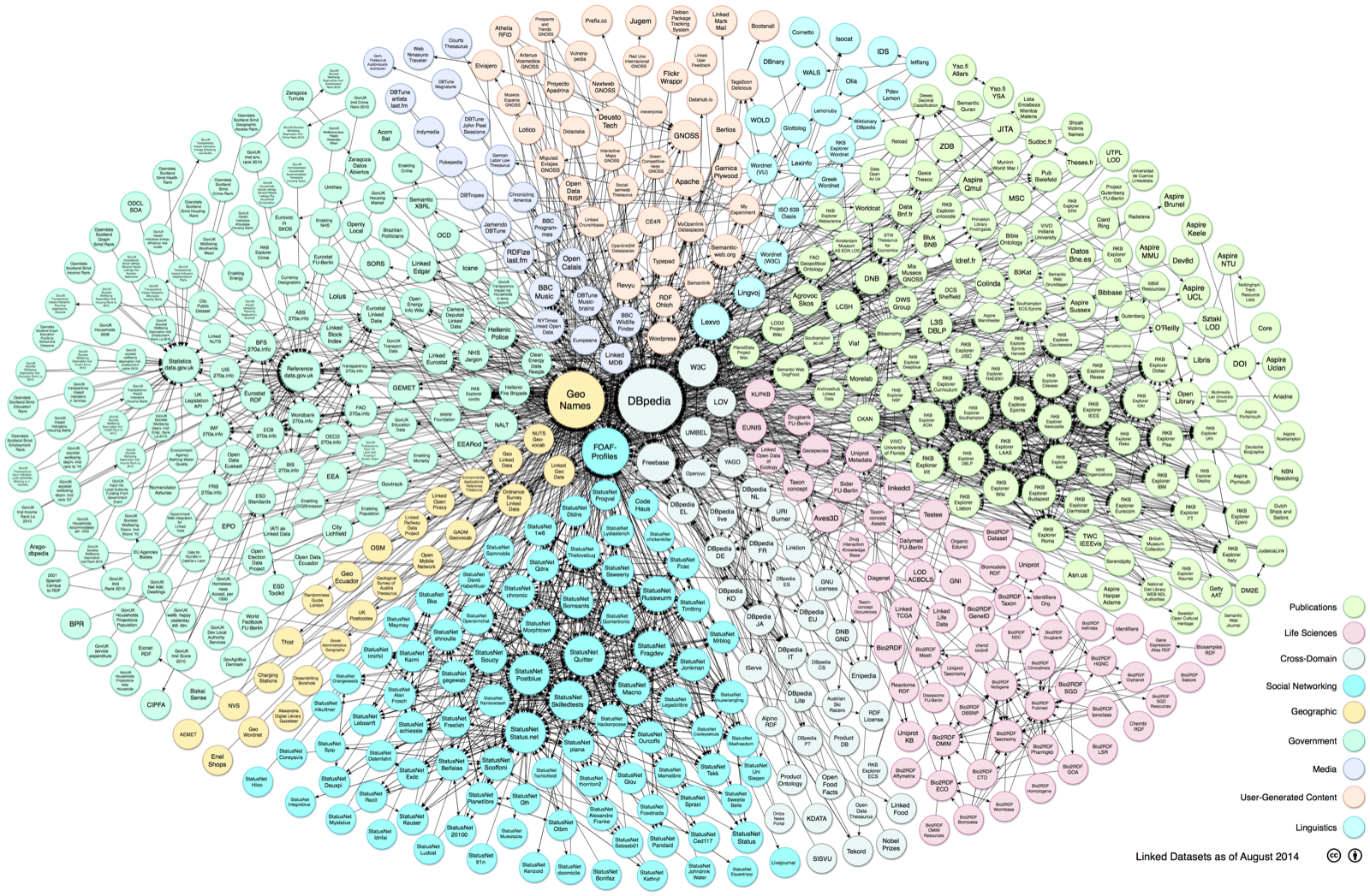
Linking Open Data cloud (last updated August 2014)
via lod-cloud.net/
A standard vocabulary for behavioral field research
EthoCore
Standard vocabulary for behavior modeled on Darwin Core
Darwin Core
- Standard vocabulary for biodiversity science
- Itself an extension of Dublin Core, which maintains metadata standards across the web
EthoCore
Currently 166 terms in eleven classes
EthoCore is designed for primatology
A community-derived vocabulary for community usage is valuable and desirable because it facilitates communication and comparison
This vocabulary may be flexibly applied in a variety of contexts including as
columns in a table
keys in key-value pairs
predicates in a linked data triple
As with Darwin Core, the EthoCore vocabulary encompasses classes and properties of information
Categories of data, not their possible values
These correspond most closely to the column headings of your tables, not the values in your cells
EthoCore classes
- Observation
- Measurement
- Organism
- Patch
- MaterialSample
- Event
- Activity
- Location
- Identification
- Taxon
- ResourceRelationship
EthoCore: design principles
Complex data structures can be deconstructed into atomic elements
Applications still require a "packaging" of atomic elements into data structures
This is where common constraints reflecting a shared model of the world are useful
Document model
EthoCore: design principles (cont'd)
Terms should be designed for packaged data structures that are as generalized as possible
Observation
New class designed specially for observational research
observationID | observationType | observationValue | observationAccuracy | observationUnit | observationDeterminedBy | observationMethod | observationRemarks
Observation documents
EthoCore: design principles (cont'd)
Relationships among resources (e.g., tables or documents) can themselves be represented as resources
ResourceRelationship
Darwin Core class for describing relationships between resources
resourceRelationshipID | resourceID | relatedResourceID | relationshipOfResource | relationshipAccordingTo | relationshipEstablishedDate | relationshipRemarks
ResourceRelationship documents
Closing thoughts
Tables
Tables have a place and relational databases are still powerful and efficient tools
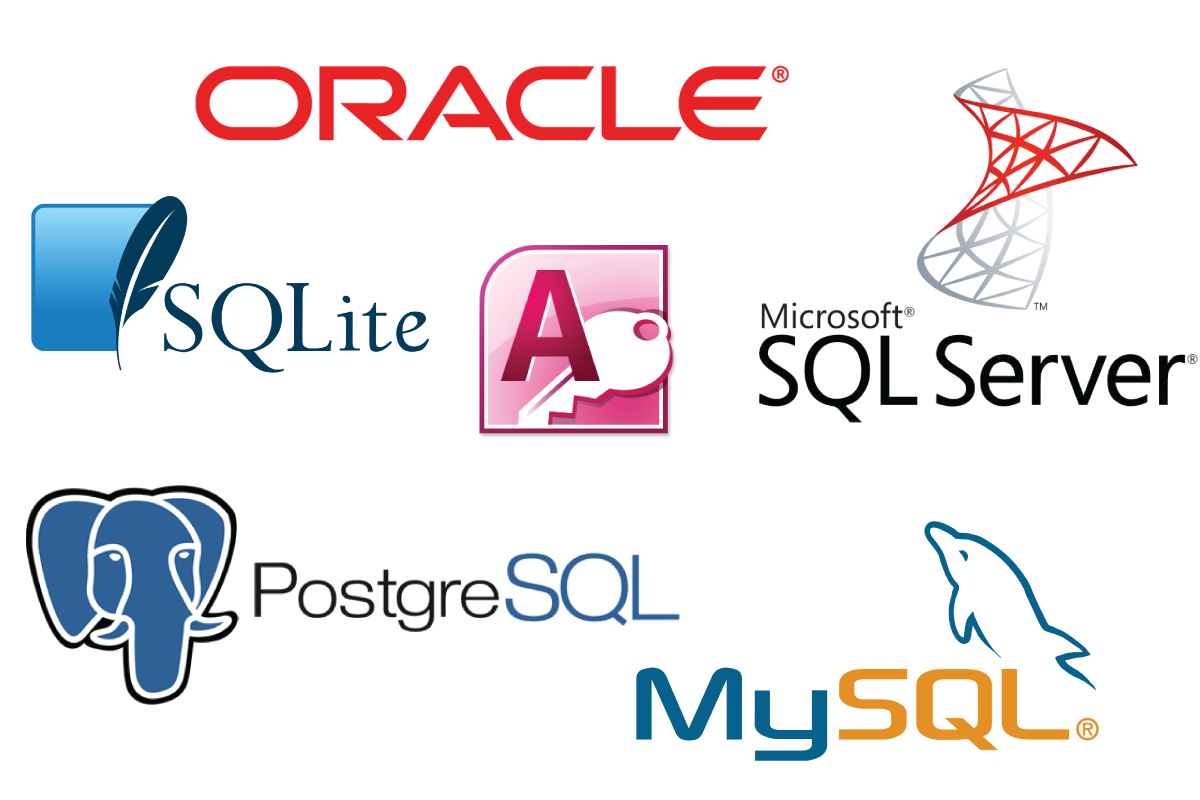
The table paradigm, however, gets in the way of comparison
As a community, we need to break free of "table-thinking" and think about commonalities in our underlying data models
New tools are making this possible
NoSQL
NoSQL ("not only SQL") databases reject the dominance of the table-based relational data model
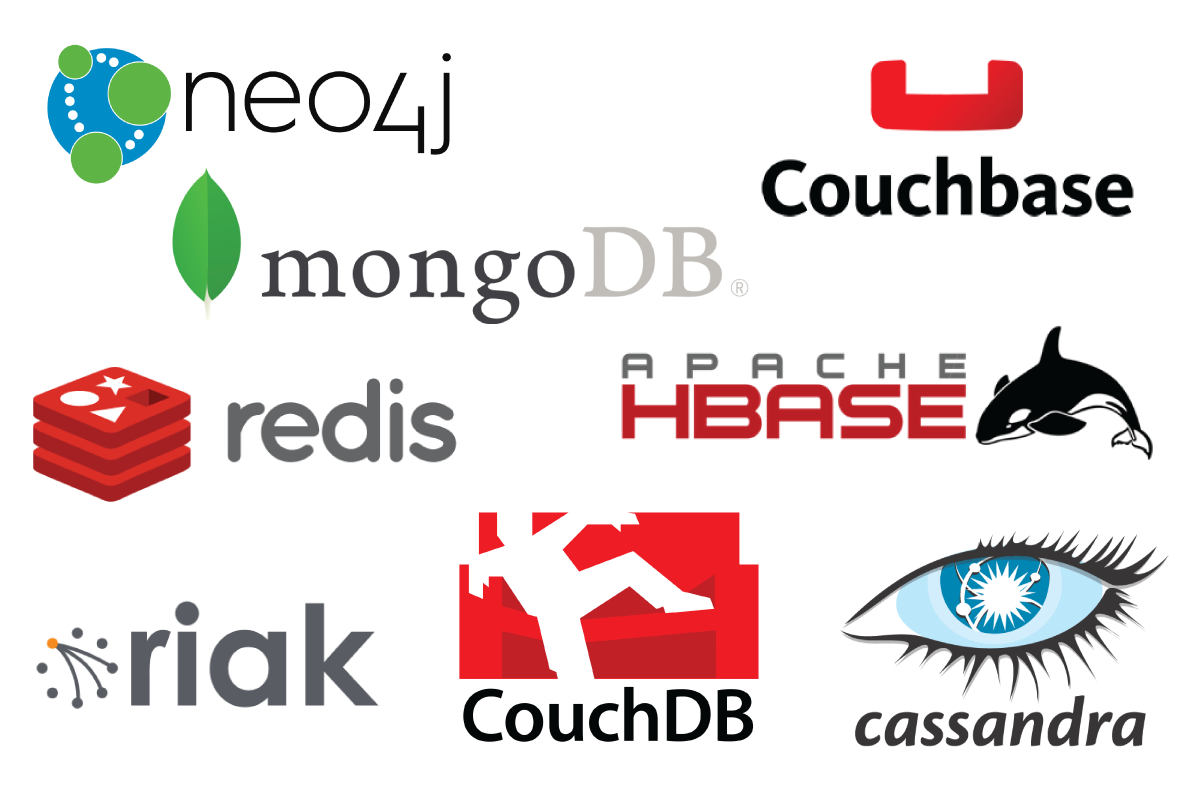
NoSQL databases are built for the Web and generally embrace web technologies such as HTTP/REST, JavaScript, and URIs/URLs
By employing data models such as the key-value or document models, NoSQL promises better software
For us, the document-oriented data design is a reasonable intermediary from our tables to, eventually, the global linked data ecosystem on the web
Next steps
Maintain our metadata initiative and solicit feedback
Observation · Measurement · Organism · Patch · MaterialSample · Event · Activity · Location · Identification · Taxon · ResourceRelationship
Engage projects to begin incorporating EthoCore terms into their databases and workflows
Develop an infrastructure for the larger anthropological community
AnthroCore
(primatology + paleontology + archaeology + ...)
Acknowledgments
- Jennifer Moore, Cynthia Hudson, & Aaron Addison Washington University Libraries
- Jane Phillips-Conroy Washington University · Neuroscience / Anthropology
- Denné Reed University of Texas at Austin · Anthropology
- National Science Foundation SMA 1338524 · SMA 1338467 · SMA 1338452

2013 St. Louis & 2015 Austin working group meetings participants
Laura Abondano · Colin Addis · Elizabeth Archie · Louise Barrett · Thore Bergman · Maryjka Blaszczyk · Damien Caillaud · Shahrina Chowdhury · Kelsey Ellis · Gideon Erkenswick · Eduardo Fernandez-Duque · Steffen Foerster · Paul Garber · Peter Henzi · Katharine Jack · Clifford Jolly · Andreas Koenig · Kara Leimberger · Rebecca Lewis · Katie MacKinnon · Amely Martins · Monica McDonald · Amanda Melin · Mike Montague · Stephanie Musgrave · Joseph Orkin · Katie Ortiz · Steve Phelps · Crickette Sanz · Clara Scarry · Christopher Schmitt · Christopher Shaffer · Joan Silk · Karen Strier · Robert Sussman · Stacey Tecot · Claudia Valeggia · Sarie Van Belle · Anna Weyher

Ethoinformatics II
Developing open-source digital data services for behavioral field research
Anthony Di Fiore · Kenneth L. Chiou · Mike Chevett · Robyn Overstreet · Tom Igoe



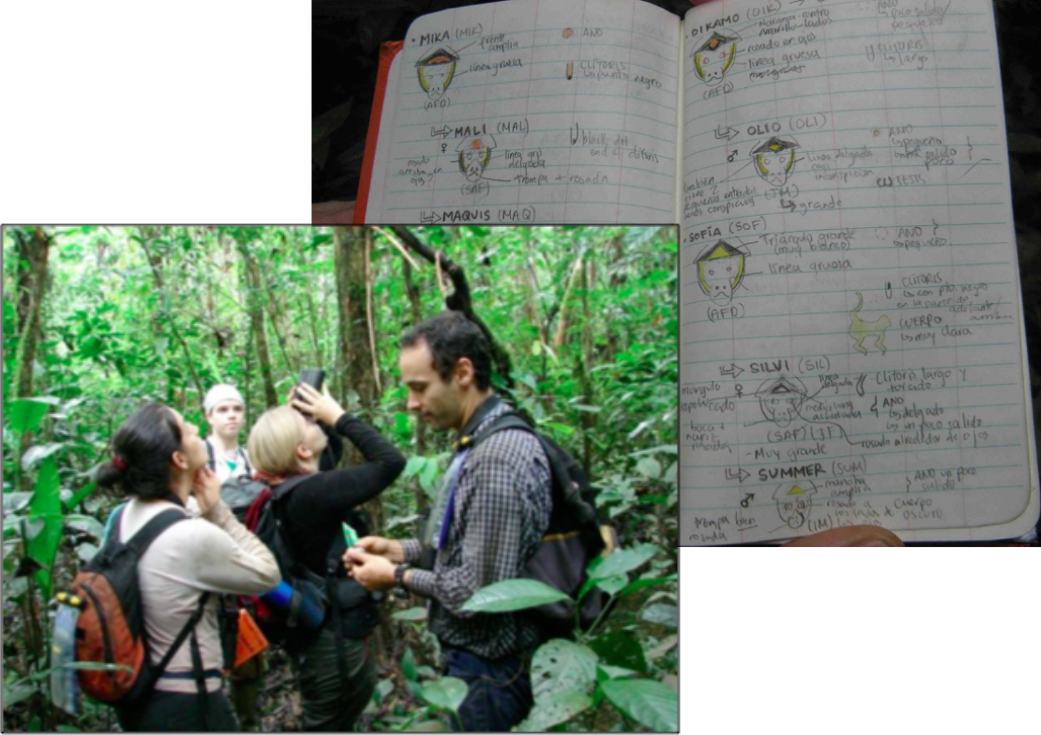
Handheld apps for field data collection
What's currently available?
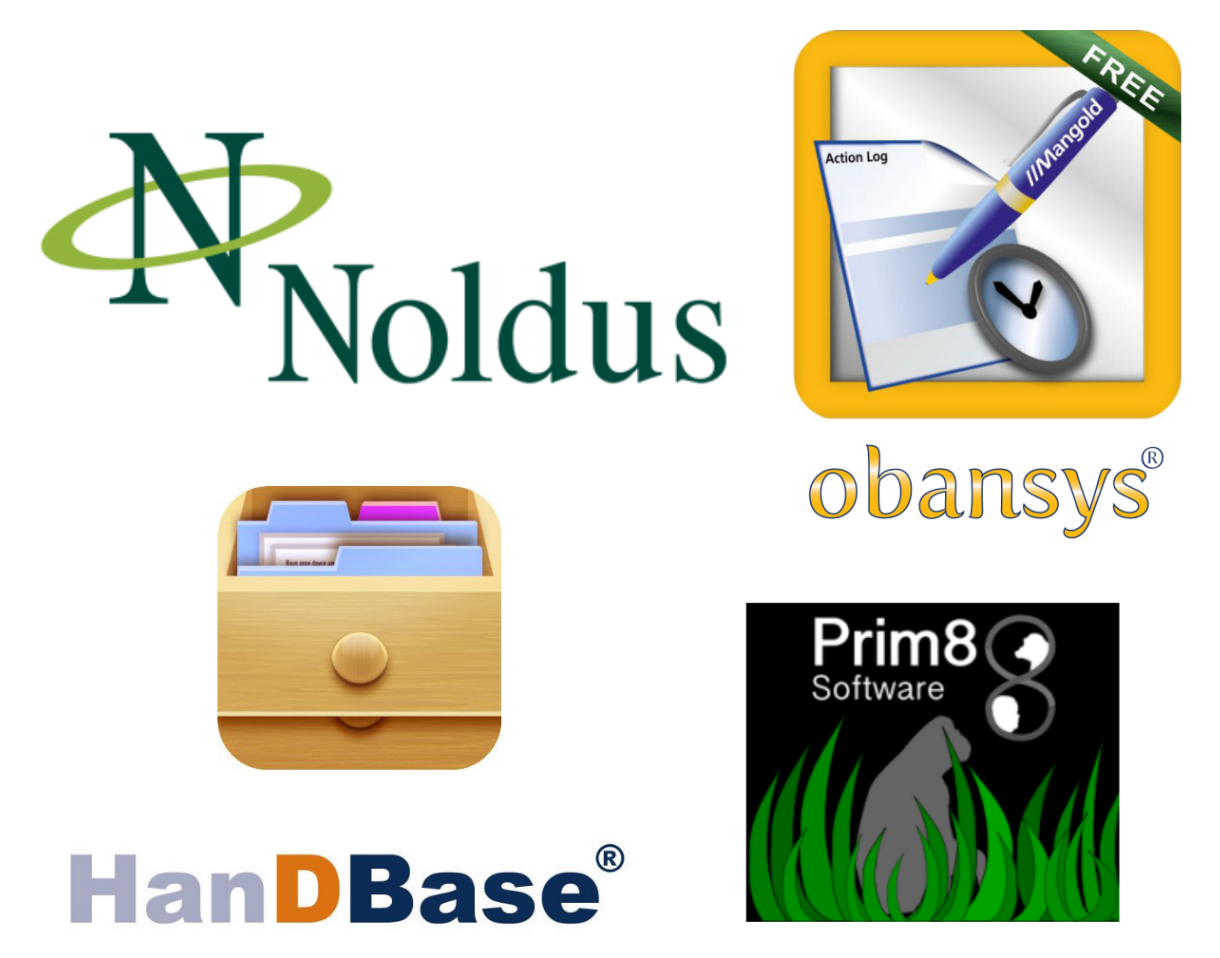
Handheld apps for field data collection
Significant limitations!
- Most are proprietary
- Limited customizability
- No emphasis on using standard ontologies
- Deal with limited data types, requiring multiple devices
- Geolocation tagging not automatic
- Not cross-platform

Goals
A handheld app that is...
- Built on open source and standard web technologies
- Configurable, modular, and allows multiple data streams
- Runs on multiple platforms and older devices
- Automatic geolocation tagging and time stamping
- Works offline without a continuous web connection
- Flexible enough to support different existing schemas
- Compliant with standards and linked data friendly
Caveat
We're not (yet!) concerned with designing a slick interface for behavioral data entry...
...instead, we're focusing on designing a modular, customizable framework for collecting multiple data streams using a single app and device
Design Philosophy
Custom data structures
- Information that goes together (metadata + data) is flexibly packaged into user-defined data structures called documents
- Documents are made up from a set of
key:valuepairs, where keys either are EthoCore terms or have have well-defined relationships with those terms
Document model
Example: "taxonomy" document
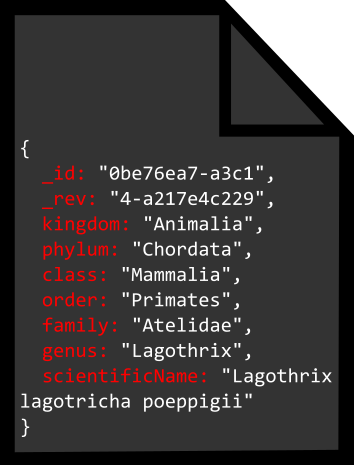
Mapping to EthoCore terms
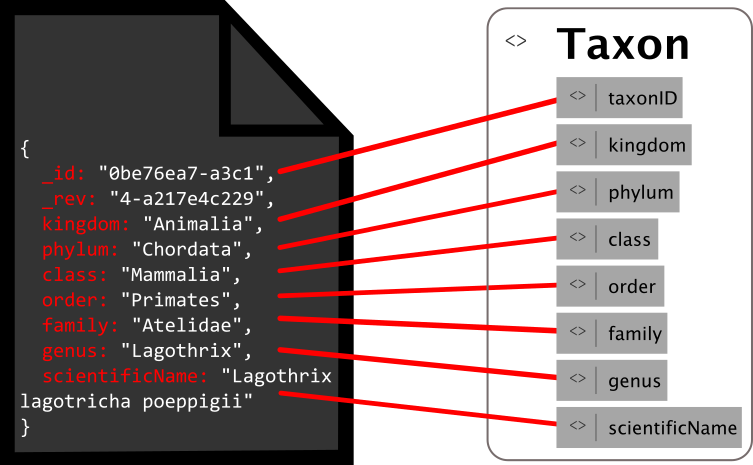
Design Philosophy
Structure of documents
- Contain a URI
- Contain key metadata
- Who made it
- Datetime (point or series) to which the data pertain
- Geolocation (point or series) to which the data pertain
- Represented in a standard format for packaging
key:valuetext
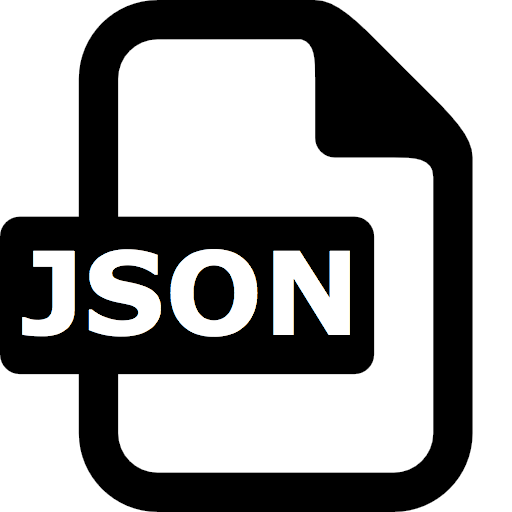
Example: "contact" document

Mapping to EthoCore terms
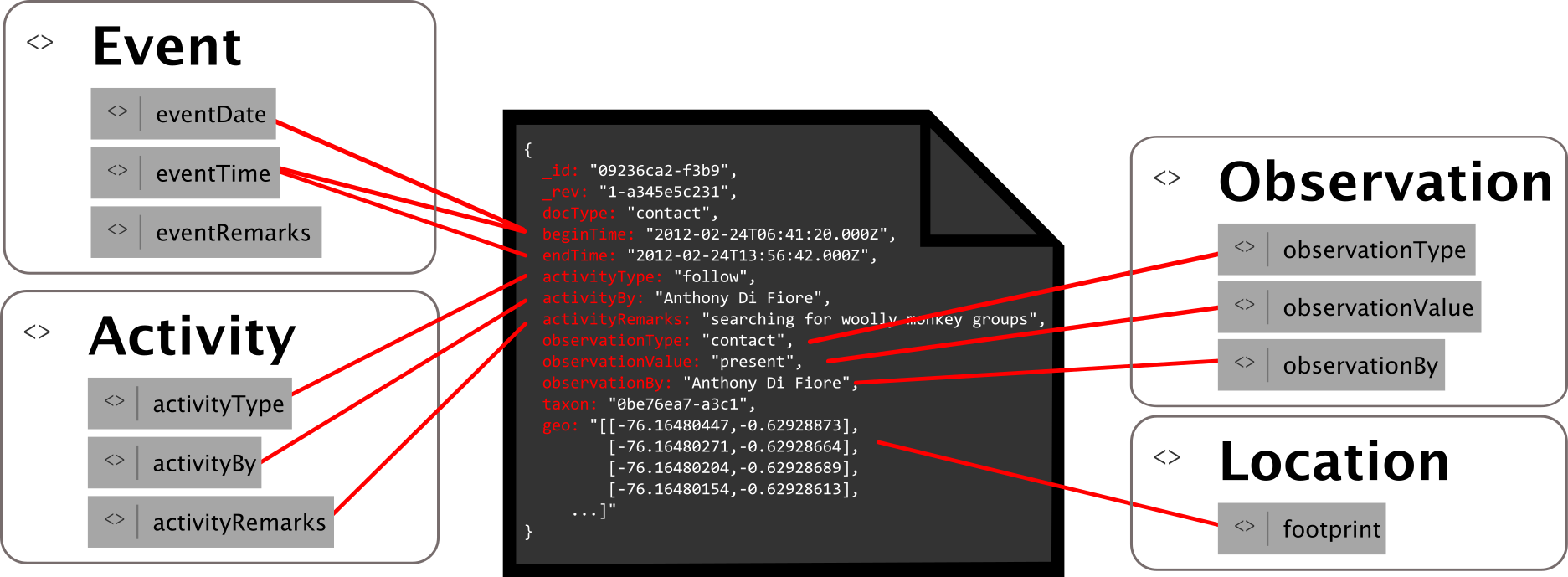
Design Philosophy
Documents can be linked to one or more other documents
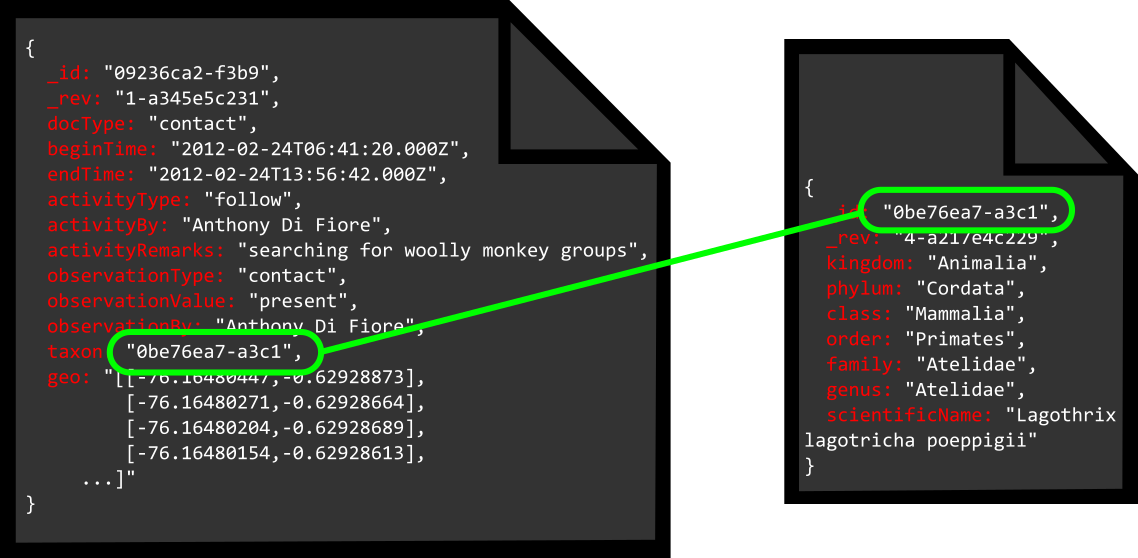
Design Philosophy
History of revision of documents is preserved
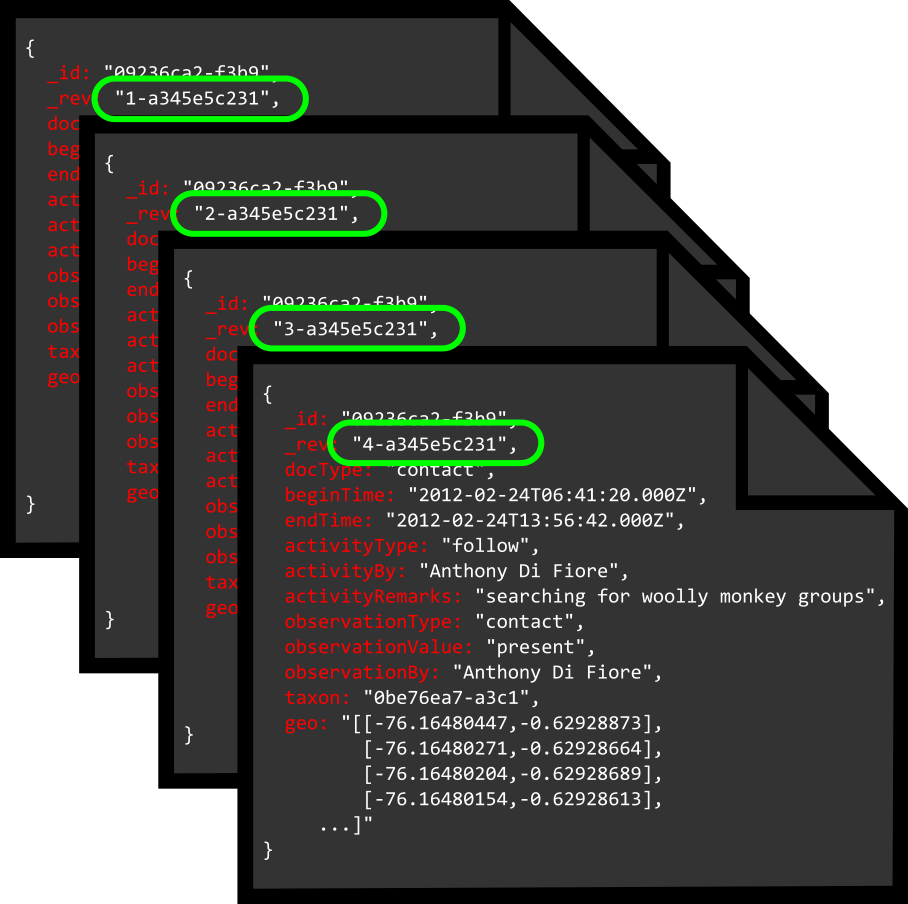
Implementation
The framework of our mobile is app is built using...

...which are the primary tools used to build interactive web interfaces.
The real programming work is done in JavaScript...

... and we use the node.js framework and the node package manager npm to bundle code from various programming libraries.
We use the Cordova framework to build the user interface...

... which lets us write one application that can be used on iOS devices, Android devices, or other laptops or tablets through a browser.
And we use document-based NoSQL databases for data storage, both locally, in the app, and on a remote server.
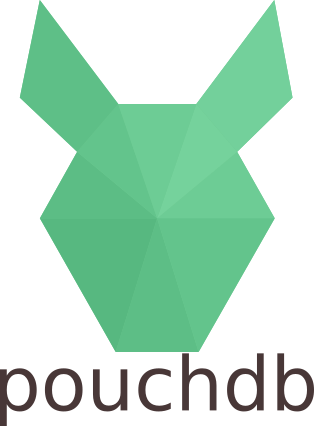
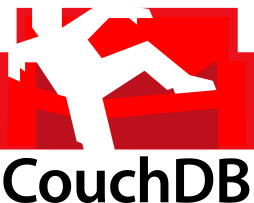
All documents tagged with geolocation, streaming continuously from a device's location services (from internal GPS, cell towers, external GPS)

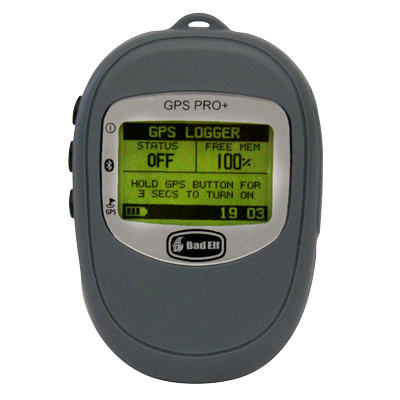
Web-based admin tool
Closing thoughts
1. Our design emphasizes modularity and versatility and allows for custom data structures and user interfaces
2. Use of the EthoCore vocabulary facilitates comparability and data sharing across studies and is a step towards joining the linked data ecosystem
3. Using documents facilitates data interchange using standard protocols and is simultaneously human-readable and easily recast into other formats
4. The timeline and map views provide real-time visual feedback in the field
5. Our approach promotes digital data collection and minimizes initial investment for projects while allowing compatibility with existing data structures and workflows


Acknowledgments
- Nick Sears & Jonathan Cousins Cousins & Sears Creative Technologists
- Jennifer Moore, Cynthia Hudson, & Aaron Addison Washington University Libraries
- Jane Phillips-Conroy Washington University · Neuroscience / Anthropology
- 2013 St. Louis & 2015 Austin working group meetings participants
Laura Abondano · Colin Addis · Elizabeth Archie · Louise Barrett · Thore Bergman · Maryjka Blaszczyk · Damien Caillaud · Shahrina Chowdhury · Kelsey Ellis · Gideon Erkenswick · Eduardo Fernandez-Duque · Steffen Foerster · Paul Garber · Peter Henzi · Katharine Jack · Clifford Jolly · Andreas Koenig · Kara Leimberger · Rebecca Lewis · Katie MacKinnon · Amely Martins · Monica McDonald · Amanda Melin · Mike Montague · Stephanie Musgrave · Joseph Orkin · Katie Ortiz · Steve Phelps · Denné Reed · Crickette Sanz · Clara Scarry · Christopher Schmitt · Christopher Shaffer · Joan Silk · Karen Strier · Robert Sussman · Stacey Tecot · Claudia Valeggia · Sarie Van Belle · Anna Weyher
- National Science Foundation SMA 1338524 · SMA 1338467 · SMA 1338452